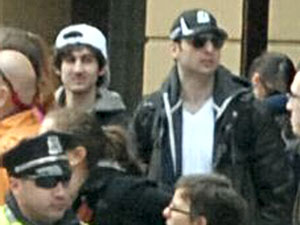
The ‘Thinspiration’ Behind an Impossible Ideal of Beauty The ‘Thinspiration’ Behind an Impossible Ideal of Beauty
Rooting out "thinspiration" in social media is a start, but we must not turn "thinspo" into a scapegoat.
Apr 23, 2013 / Chloe Angyal

Pennsylvania Think Tank Plans to ‘Slay’ Unions, Like in Wisconsin Pennsylvania Think Tank Plans to ‘Slay’ Unions, Like in Wisconsin
A fundraising letter obtained by The Nation lays out right-wing efforts in Pennsylvania to go after labor unions.
Apr 23, 2013 / Lee Fang

Exit of Wall Street–Friendly Max Baucus is No Loss for Democrats Exit of Wall Street–Friendly Max Baucus is No Loss for Democrats
The Senate Finance Committee chair who often clashed with party progressives and populists is quitting. A very different Democrat might replace him.
Apr 23, 2013 / John Nichols

Jeremy Scahill: The Secret Story Behind Obama’s Assassination of Two Americans in Yemen Jeremy Scahill: The Secret Story Behind Obama’s Assassination of Two Americans in Yemen
Who were the al-Awlakis, and why did the US kill them?
Apr 23, 2013 / Press Room

Jeremy Scahill: Telling the Story of America’s Dirty Wars Jeremy Scahill: Telling the Story of America’s Dirty Wars
What do we know—and not know—about the US’s covert, extrajudicial ops?
Apr 23, 2013 / Press Room

277 Million Boston Bombings 277 Million Boston Bombings
The United States has dropped millions of cluster bombs on other countries that continue to kill today.
Apr 23, 2013 / Robert Scheer

The Austerity Doctrine Exposed The Austerity Doctrine Exposed
Budget cuts arise because of crises, not vice versa. Will congressional Republicans ever learn?
Apr 23, 2013 / Katrina vanden Heuvel

Jeremy Scahill: Killing Anwar al-Awlaki Jeremy Scahill: Killing Anwar al-Awlaki
With the killing of Awlaki, the president of the United States became judge, jury and executioner for American citizens.
Apr 23, 2013 / Francis Reynolds

The Week in #Fail The Week in #Fail
The media, the austerity-hawks and the government should all just give up.
Apr 23, 2013 / Tom Tomorrow

The Chechen-Dagestan Connection to Boston The Chechen-Dagestan Connection to Boston
The FBI needs to release its Tsarnaev file.
Apr 23, 2013 / Bob Dreyfuss
